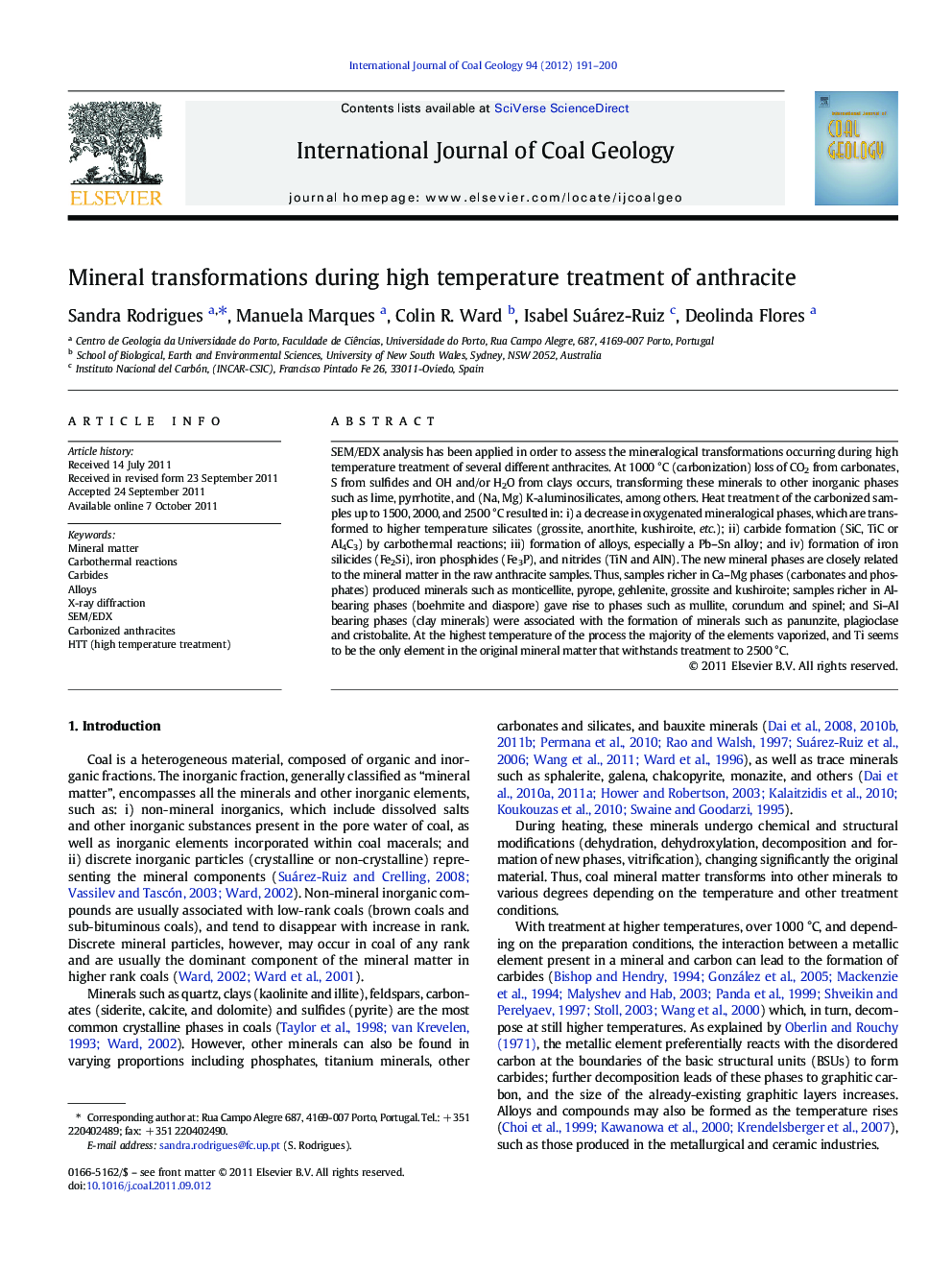| کد مقاله | کد نشریه | سال انتشار | مقاله انگلیسی | نسخه تمام متن |
|---|---|---|---|---|
| 1753654 | 1522599 | 2012 | 10 صفحه PDF | دانلود رایگان |

SEM/EDX analysis has been applied in order to assess the mineralogical transformations occurring during high temperature treatment of several different anthracites. At 1000 °C (carbonization) loss of CO2 from carbonates, S from sulfides and OH and/or H2O from clays occurs, transforming these minerals to other inorganic phases such as lime, pyrrhotite, and (Na, Mg) K-aluminosilicates, among others. Heat treatment of the carbonized samples up to 1500, 2000, and 2500 °C resulted in: i) a decrease in oxygenated mineralogical phases, which are transformed to higher temperature silicates (grossite, anorthite, kushiroite, etc.); ii) carbide formation (SiC, TiC or Al4C3) by carbothermal reactions; iii) formation of alloys, especially a Pb–Sn alloy; and iv) formation of iron silicides (Fe2Si), iron phosphides (Fe3P), and nitrides (TiN and AlN). The new mineral phases are closely related to the mineral matter in the raw anthracite samples. Thus, samples richer in Ca–Mg phases (carbonates and phosphates) produced minerals such as monticellite, pyrope, gehlenite, grossite and kushiroite; samples richer in Al-bearing phases (boehmite and diaspore) gave rise to phases such as mullite, corundum and spinel; and Si–Al bearing phases (clay minerals) were associated with the formation of minerals such as panunzite, plagioclase and cristobalite. At the highest temperature of the process the majority of the elements vaporized, and Ti seems to be the only element in the original mineral matter that withstands treatment to 2500 °C.
► X-ray diffraction and SEM/EDX analyses point out for higher contents of clay minerals in the coal samples.
► At 1000ºC mineral transformations are related to loss of CO2 from carbonates, S from sulfides and H2O or OH from clays.
► HTT reveal a decrease in oxygenated phases and increase of carbothermal reactions.
► Phosphides, nitrides and silicides phases also occur at increasing temperature.
Journal: International Journal of Coal Geology - Volume 94, 1 May 2012, Pages 191–200